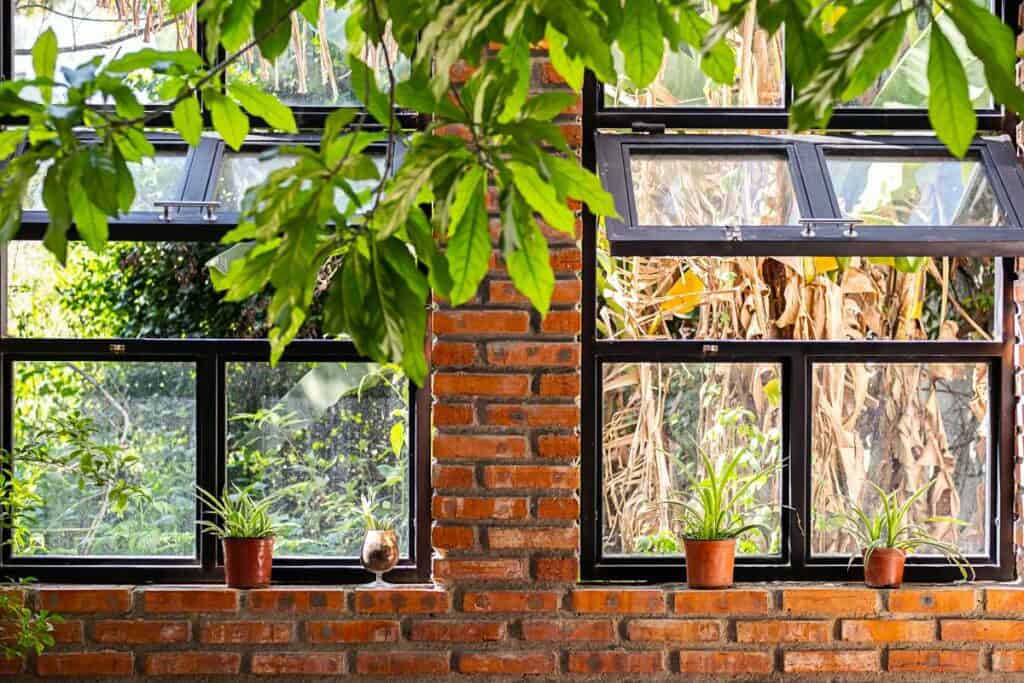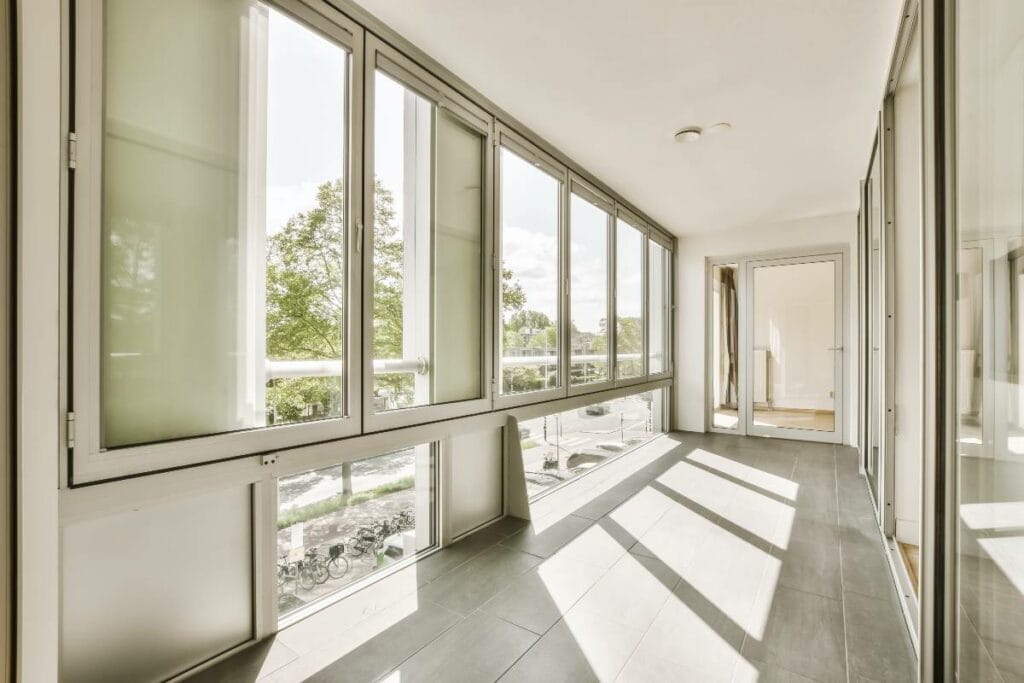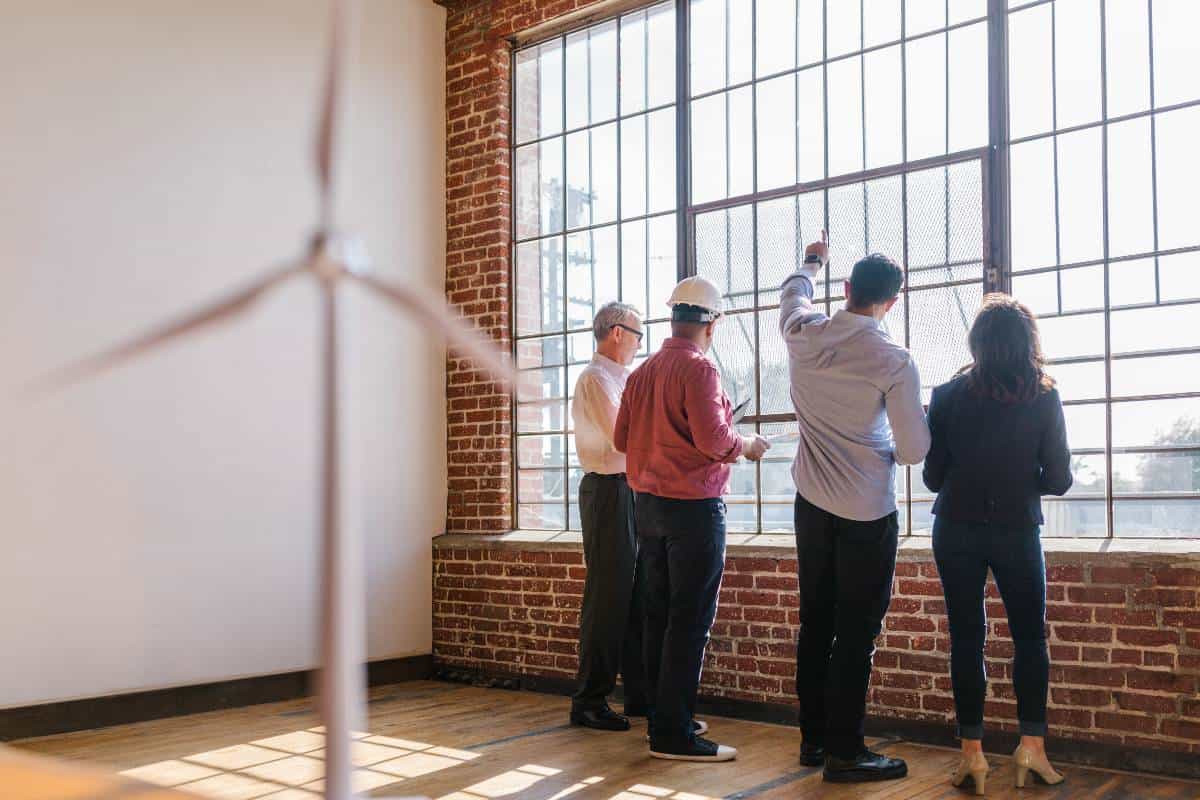As a seasoned professional in the commercial real estate industry, I’ve seen firsthand the importance of energy efficiency in both residential and commercial properties. Energy-efficient solutions not only help reduce our environmental impact but also lead to significant cost savings over time. One of the most critical areas to focus on when it comes to energy efficiency is your home’s windows.
Windows play a vital role in regulating your home’s temperature and can be responsible for a substantial portion of your energy consumption. Thankfully, advancements in window technology have led to the development of various energy-saving window solutions. In this article, we’ll explore the world of energy-efficient windows, from understanding heat transfer to selecting the best options for your home. So, let’s dive in and discover how you can enhance your home’s energy efficiency with smart window solutions!
Key Takeaways
- Energy-saving windows can significantly reduce your home’s energy consumption and costs
- Choosing the right window technologies and treatments is crucial for maximizing efficiency
- Professional installation and proper maintenance ensure optimal performance and longevity
Understanding Heat Transfer Through Windows
To grasp the importance of energy-saving windows, it’s essential to understand how heat transfer works. There are three primary ways heat can transfer through your windows: conduction, convection, and radiation.
- Conduction occurs when heat travels through a solid material, such as the window frame or glass.
- Convection happens when heat is carried by air currents, like warm air rising and cool air sinking.
- Radiation is the transfer of heat through electromagnetic waves, such as sunlight passing through your windows.
Several factors can influence the amount of heat transfer through your windows, including:
- Window materials (e.g., wood, vinyl, fiberglass)
- Glazing type (single, double, or triple-pane)
- Air space between panes
- Low-E coatings and gas fills
Additionally, the impact of heat transfer through your windows varies depending on the season. During summer, your windows can allow unwanted heat to enter, forcing your cooling system to work harder. In winter, poorly insulated windows can let precious heat escape, leading to higher heating bills. By understanding these concepts, you can make informed decisions when selecting energy-saving windows for your home.
Energy-Efficient Window Technologies
Advancements in window technology have led to the development of several energy-efficient solutions. Let’s explore some of the most popular options:
| Technology | Description | Benefits |
|---|---|---|
| Low-E Coatings | Ultra-thin, virtually invisible metal or metallic oxide layers applied to window glass | – Reflects infrared light, keeping heat inside during winter and outside during summer – Blocks harmful UV rays, protecting furniture and flooring from fading |
| Insulated Glass Units (IGUs) | Two or more panes of glass separated by a sealed air space | – Creates an insulating barrier, reducing heat transfer – Improves energy efficiency – Can be filled with air or inert gases for better insulation |
| Gas Fills | Inert, non-toxic gases (argon or krypton) used in IGUs | – Denser than air, slowing down convective currents – Reduces heat transfer between panes |
| Spacers and Framing Materials | Components that separate and seal the panes of glass in an IGU | – Innovative designs (foam or low-conductivity materials) minimize heat transfer – Improves edge seal performance |
| Smart Glass | Electrochromic and thermochromic glass that dynamically adapts to changing light and temperature conditions | – Electrochromic glass can be tinted on demand using an electrical current – Thermochromic glass automatically changes tint in response to temperature variations – Offers both energy efficiency and enhanced comfort |
| Vacuum-Insulated Glazing (VIG) | Emerging technology that removes air from between panes, creating a vacuum | – Minimizes heat transfer through conduction and convection – Provides superior insulation – Shows great promise for future energy-saving window designs |
As you can see, each technology offers unique benefits that contribute to overall energy efficiency. Low-E coatings and gas fills improve insulation and reduce heat transfer, while smart glass and vacuum-insulated glazing represent exciting new frontiers in window technology.
When selecting energy-efficient windows for your home, consider a combination of these technologies to maximize your energy savings and comfort. Consult with a professional window installer to determine the best options for your specific needs and budget.
Low-E Coatings
Low-E (low-emissivity) coatings are ultra-thin, virtually invisible metal or metallic oxide layers applied to window glass. These coatings help reflect infrared light, keeping heat inside during winter and outside during summer. Low-E coatings also block harmful UV rays, protecting your furniture and flooring from fading.
Insulated Glass Units (IGUs)
Insulated glass units (IGUs) consist of two or more panes of glass separated by a sealed air space. This design creates an insulating barrier, reducing heat transfer and improving energy efficiency. IGUs can be filled with air or inert gases like argon or krypton for even better insulation.
Gas Fills
Argon and krypton gas fills are often used in IGUs to enhance insulation properties. These inert, non-toxic gases are denser than air, slowing down convective currents and reducing heat transfer between panes.
Spacers and Framing Materials
The spacer is the component that separates and seals the panes of glass in an IGU. Traditional metal spacers can conduct heat, reducing the window’s overall efficiency. Innovative spacer designs, such as those made from foam or other low-conductivity materials, help minimize heat transfer and improve edge seal performance.
Smart Glass
Smart glass technologies, like electrochromic and thermochromic glass, can dynamically adapt to changing light and temperature conditions. Electrochromic glass can be tinted on demand using an electrical current, while thermochromic glass automatically changes tint in response to temperature variations. These advanced options offer both energy efficiency and enhanced comfort.
Vacuum-Insulated Glazing (VIG)
Vacuum-insulated glazing (VIG) is an emerging technology that takes insulation to the next level. By removing air from between the panes and creating a vacuum, VIG windows minimize heat transfer through conduction and convection. While still relatively new, VIG shows great promise for future energy-saving window designs.
Selecting the Right Energy-Saving Windows for Your Home
With so many energy-efficient window options available, it can be overwhelming to choose the best ones for your home. Here are some key factors to consider:
Climate Considerations
Your local climate plays a significant role in determining the most suitable window options. For example, homes in colder regions may benefit from windows with lower U-factors (a measure of heat transfer), while those in hotter climates may prioritize lower solar heat gain coefficients (SHGC) to minimize heat gain from the sun.
Window Styles and Operation Types
The style and operation type of your windows can also impact energy efficiency. Fixed windows, which don’t open, typically offer better insulation than operable windows. Among operable windows, casement and awning styles tend to provide a tighter seal than sliding or single-hung windows.
Energy Performance Ratings
When comparing windows, look for the NFRC (National Fenestration Rating Council) label, which provides standardized ratings for energy performance. Key metrics to consider include:
- U-factor: Measures heat transfer; lower values indicate better insulation
- SHGC: Indicates solar heat gain; lower values mean less heat gain
- VT (Visible Transmittance): Measures the amount of visible light that passes through; higher values indicate more natural light

ENERGY STAR Certification
ENERGY STAR certified windows have been independently verified to meet strict energy efficiency guidelines set by the U.S. Environmental Protection Agency (EPA). Choosing ENERGY STAR windows ensures you are getting a product that has been rigorously tested and proven to deliver superior energy savings.
Noise Reduction Benefits
In addition to energy efficiency, noise reduction is another advantage of well-insulated windows. If you live in a busy urban area or near a highway, consider windows with higher STC (Sound Transmission Class) ratings for better sound insulation.
Enhancing Energy Efficiency with Window Treatments
While selecting the right energy-saving windows is crucial, don’t overlook the importance of window treatments. The right treatments can enhance your windows’ efficiency and provide additional benefits like light control and privacy. Let’s look at some popular options:
Curtains and Drapes
Curtains and drapes can help insulate your windows, especially if they are made from heavy, tightly woven fabrics. For maximum efficiency, choose curtains with thermal backing and ensure they fit snugly against the wall and window frame.
Blinds and Shades
Blinds and shades offer a versatile solution for controlling light and heat gain. Cellular or honeycomb shades are particularly effective at insulating, thanks to their unique design that traps air in pockets. Reflective blinds can also help deflect sunlight and reduce heat gain during summer.
Awnings and Exterior Shading Devices
Exterior shading devices, such as awnings, shutters, and louvers, can block sunlight before it reaches your windows. This approach is especially useful for south- and west-facing windows that receive a lot of direct sunlight.
Insulating Window Panels
Insulating window panels are removable inserts that fit snugly inside your window frames, providing an extra layer of insulation. They are particularly useful for older, drafty windows or during extreme weather conditions.
Motorized and Smart Window Treatments
Motorized and smart window treatments offer the ultimate convenience and energy efficiency. With the touch of a button or a programmed schedule, you can adjust your window treatments to optimize heat gain or retention throughout the day.
Professional Window Installation and Retrofit Options
Proper installation is key to ensuring your energy-saving windows perform as intended. While DIY installation may be tempting, it’s often best to hire a professional window installer. They have the expertise and tools to ensure a precise, weathertight fit and can help you avoid costly mistakes.
If you’re not ready to replace your windows entirely, consider retrofit options. These include:
- Installing storm windows or panels over your existing windows
- Adding window films or low-E coatings to improve insulation and reduce heat gain
- Replacing worn weatherstripping and caulking to seal air leaks
Many professional window companies offer retrofit services, which can be a cost-effective way to improve your windows’ efficiency without the expense of full replacement.
Maintenance and Troubleshooting
To keep your energy-saving windows performing optimally, regular maintenance is essential. This includes:
- Cleaning window glass and frames regularly to prevent buildup of dirt and grime
- Lubricating moving parts, such as hinges and tracks, to ensure smooth operation
- Inspecting and replacing weatherstripping and caulking as needed to maintain a tight seal
- Checking for signs of moisture or condensation, which can indicate a faulty seal or improper installation
If you notice any issues with your windows, such as drafts, condensation, or difficulty opening and closing, address them promptly. Many common problems can be resolved with simple fixes, like adjusting hinges or replacing weatherstripping. However, if you suspect a more serious issue, like a broken seal or frame damage, consult a professional window repair service.
Ultimately, even the best energy-saving windows will need to be replaced eventually. The lifespan of your windows will depend on factors like material, quality, and maintenance. Generally, well-maintained windows can last 20 years or more. If your windows are showing signs of age or have become difficult to operate, it may be time to consider replacement.
Cost-Benefit Analysis of Energy-Saving Windows
Investing in energy-saving windows can be a significant upfront expense, but it’s essential to consider the long-term benefits. Here are some key factors to weigh:
Initial Investment vs. Long-Term Energy Savings
Energy-efficient windows typically cost more than traditional windows, but they can lead to substantial energy savings over time. The exact amount you’ll save depends on factors like your climate, home size, and window type, but many homeowners report savings of 10-25% on their annual energy bills. Studies and statistics have shown that replacing single-pane windows with energy-efficient windows can save a significant amount on annual energy bills.
Rebates and Incentives
Many utility companies, state and local governments offer rebates, tax credits, or other incentives for installing energy-efficient windows. These programs can help offset the initial cost and make upgrading more affordable.
Impact on Home Value and Comfort
Energy-saving windows can be a selling point for potential buyers, increasing your home’s value and marketability. They also contribute to a more comfortable living space, with fewer drafts, more consistent temperatures, and less outside noise.
Financing Options
If the upfront cost of new windows is a concern, financing options are available. Many window companies offer payment plans or partner with lenders to provide low-interest loans. Some utility companies also offer on-bill financing, allowing you to pay for your windows over time through your monthly energy bills.

Future of Energy-Efficient Windows
As technology advances, the future of energy-efficient windows looks bright. Some exciting developments on the horizon include:
- Photovoltaic (PV) windows that can generate electricity from sunlight
- Self-tinting windows that automatically adjust to changing light conditions
- Vacuum-insulated windows that provide superior insulation in a thinner profile
- Bio-based materials that offer sustainable alternatives to traditional window components
Researchers are also exploring ways to integrate windows into smart home systems, allowing for automated control based on occupancy, weather conditions, and energy needs.
As the demand for energy-efficient buildings grows, we can expect to see continued innovation in window technology. These advancements will not only help homeowners save money and reduce their environmental impact but also contribute to the development of more sustainable and resilient communities.
FAQs
How much can I expect to save on my energy bills with energy-saving windows?
Energy-saving windows can reduce your energy bills by 10-25% annually, depending on factors like climate, home size, and window type. Actual savings vary, but most homeowners see significant reductions.
What are the most cost-effective energy-saving window options?
Double-pane windows with Low-E coatings and argon gas fills are often the most cost-effective option, balancing upfront costs with long-term energy savings. They provide excellent insulation at a reasonable price.
Can I install energy-saving windows myself, or do I need a professional?
While DIY installation is possible, it’s generally recommended to hire a professional window installer. They ensure proper fit, weathertightness, and optimal performance, preventing costly mistakes and ensuring warranty coverage.
How long do energy-saving windows typically last?
Energy-saving windows can last 20-25 years or more with proper maintenance. Factors like material quality, installation, and climate affect lifespan. Regular cleaning and sealing help maximize their longevity.
Are there any government incentives or rebates available for installing energy-saving windows?
Yes, many state and local governments offer tax credits, rebates, or other incentives for installing energy-efficient windows. Check with your local utility company or visit ENERGY STAR’s website for current offerings.
Conclusion
Investing in energy-saving windows is a smart choice for any homeowner looking to improve their home’s efficiency, comfort, and value. By understanding the principles of heat transfer, exploring the latest window technologies, and considering factors like climate and budget, you can select the best windows for your needs.
Remember, energy-efficient windows are just one piece of the puzzle. Combine them with proper installation, regular maintenance, and smart use of window treatments for maximum benefit. As technology continues to evolve, staying informed about the latest advancements can help you make the most of your investment in energy-saving windows.
If you’re ready to take the next step in enhancing your home’s energy efficiency, I invite you to schedule a consultation with my team of experts. We’re passionate about finding the perfect window solutions for your unique needs and budget. With our guidance, you can enjoy a more comfortable, sustainable, and cost-effective home. Don’t wait – contact us today to start your journey towards a more energy-efficient future!




